Potřebujeme váš souhlas k využití jednotlivých dat, aby se vám mimo jiné mohly ukazovat informace týkající se vašich zájmů. Souhlas udělíte kliknutím na tlačítko „OK“.
ASTM D2435/D2435M-11
Standard Test Methods for One-Dimensional Consolidation Properties of Soils Using Incremental Loading
Automaticky přeložený název:
Standardní zkušební metody pro jednorozměrné konsolidace vlastnosti zemin použití přírůstkové Nahrávám
NORMA vydána dne 1.5.2011
Informace o normě:
Označení normy: ASTM D2435/D2435M-11
Poznámka: NEPLATNÁ
Datum vydání normy: 1.5.2011
Kód zboží: NS-20365
Počet stran: 15
Přibližná hmotnost: 45 g (0.10 liber)
Země: Americká technická norma
Kategorie: Technické normy ASTM
Kategorie - podobné normy:
Zemní práce. Hloubicí práce. Budování základů. Podzemní práce
Anotace textu normy ASTM D2435/D2435M-11 :
Keywords:
compressibility, compression curves, consolidation, consolidation coefficient, consolidation test, consolidometer, preconsolidation pressure, preconsolidation stress, primary consolidation, rebound, secondary compression, settlement, swelling: Compression testing--soil, Consolidation, Preconsolidation pressure, Primary consolidation, Rebound, Secondary compression, Settlement, Soil, Swelling, ICS Number Code 93.020 (Earth works. Excavations. Foundation construction. Underground works)
Doplňující informace
| Significance and Use | ||||||||||||||||||||||||||||||||||
|
The data from the consolidation test are used to estimate the magnitude and rate of both differential and total settlement of a structure or earthfill. Estimates of this type are of key importance in the design of engineered structures and the evaluation of their performance. The test results can be greatly affected by sample disturbance. Careful selection and preparation of test specimens is required to reduce the potential of disturbance effects. Note 3—Notwithstanding the statement on precision and bias contained in this standard, the precision of this test method is dependent on the competence of the personnel performing the test and suitability of the equipment and facilities used. Agencies that meet the criteria of Practice D3740 generally are considered capable of competent and objective testing. Users of this test method are cautioned that compliance with Practice D3740 does not assure reliable testing. Reliable testing depends on many factors, and Practice D3740 provides a means of evaluation some of these factors. Consolidation test results are dependent on the magnitude of the load increments. Traditionally, the axial stress is doubled for each increment resulting in a load increment ratio of 1. For intact samples, this loading procedure has provided data from which estimates of the preconsolidation stress, using established interpretation techniques, compare favorably with field observations. Other loading schedules may be used to model particular field conditions or meet special requirements. For example, it may be desirable to inundate and load the specimen in accordance with the wetting or loading pattern expected in the field in order to best evaluate the response. Load increment ratios of less than 1 may be desirable for soils that are highly sensitive or whose response is highly dependent on strain rate. The interpretation method specified by these test methods to estimate the preconsolidation stress provides a simple technique to verify that one set of time readings are taken after the preconsolidation stress and that the specimen is loaded to a sufficiently high stress level. Several other evaluation techniques exist and may yield different estimates of the preconsolidation stress. Alternative techniques to estimate the preconsolidation stress may be used when agreed to by the requesting agency and still be in conformance with these test methods. Consolidation test results are dependent upon the duration of each load increment. Traditionally, the load duration is the same for each increment and equal to 24 h. For some soils, the rate of consolidation is such that complete consolidation (dissipation of excess pore pressure) will require more than 24 h. The apparatus in general use does not have provisions for formal verification of pore pressure dissipation. It is necessary to use an interpretation technique which indirectly determines that consolidation is essentially complete. These test methods specify procedures for two techniques (Method A and Method B), however alternative techniques may be used when agreed to by the requesting agency and still be in conformance with these test methods. The apparatus in general use for these test methods do not have provisions for verification of saturation. Most intact samples taken from below the water table will be saturated. However, the time rate of deformation is very sensitive to degree of saturation and caution must be exercised regarding estimates for duration of settlements when partially saturated conditions prevail. Inundation of the test specimen does not significantly change the degree of saturation of the test specimen but rather provides boundary water to eliminate negative pore pressure associated with sampling and prevents evaporation during the test. The extent to which partial saturation influences the test results may be a part of the test evaluation and may include application of theoretical models other than conventional consolidation theory. Alternatively, the test may be performed using an apparatus equipped to saturate the specimen. These test methods use conventional consolidation theory based on Terzaghi's consolidation equation to compute the coefficient of consolidation, cv. The analysis is based upon the following assumptions: The soil is saturated and has homogeneous properties; The flow of pore water is in the vertical direction; The compressibility of soil particles and pore water is negligible compared to the compressibility of the soil skeleton; The stress-strain relationship is linear over the load increment; The ratio of soil permeability to soil compressibility is constant over the load increment; and Darcy's law for flow through porous media applies. |
||||||||||||||||||||||||||||||||||
| 1. Scope | ||||||||||||||||||||||||||||||||||
| p id="s00002">1.1 These test methods cover procedures for
determining the magnitude and rate of consolidation of soil when it
is restrained laterally and drained axially while subjected to
incrementally applied controlled-stress loading. Two alternative
procedures are provided as follows:
1.1.1 Test Method A—This test method is performed with constant load increment duration of 24 h, or multiples thereof. Time-deformation readings are required on a minimum of two load increments. This test method provides only the compression curve of the specimen and the results combine both primary consolidation and secondary compression deformations. 1.1.2 Test Method B—Time-deformation readings are required on all load increments. Successive load increments are applied after 100 % primary consolidation is reached, or at constant time increments as described in Test Method A. This test method provides the compression curve with explicit data to account for secondary compression, the coefficient of consolidation for saturated materials, and the rate of secondary compression. Note 1—The determination of the rate and magnitude of consolidation of soil when it is subjected to controlled-strain loading is covered by Test Method D4186. 1.2 These test methods are most commonly performed on saturated intact samples of fine grained soils naturally sedimented in water, however, the basic test procedure is applicable, as well, to specimens of compacted soils and intact samples of soils formed by other processes such as weathering or chemical alteration. Evaluation techniques specified in these test methods assume the pore space is fully saturated and are generally applicable to soils naturally sedimented in water. Tests performed on other unsaturated materials such as compacted and residual (weathered or chemically altered) soils may require special evaluation techniques. In particular, the rate of consolidation (interpretation of the time curves) is only applicable to fully saturated specimens. 1.3 It shall be the responsibility of the agency requesting this test to specify the magnitude and sequence of each load increment, including the location of a rebound cycle, if required, and, for Test Method A, the load increments for which time-deformation readings are desired. The required maximum stress level depends on the purpose of the test and must be agreed on with the requesting agency. In the absence of specific instructions, Section 11 provides the default load increment and load duration schedule for a standard test. Note 2—Time-deformation readings are required to determine the time for completion of primary consolidation and for evaluating the coefficient of consolidation, cv. Since cv varies with stress level and loading type (loading or unloading), the load increments with timed readings must be selected with specific reference to the individual project. Alternatively, the requesting agency may specify Test Method B wherein the time-deformation readings are taken on all load increments. 1.4 These test methods do not address the use of a back pressure to saturate the specimen. Equipment is available to perform consolidation tests using back pressure saturation. The addition of back pressure saturation does not constitute non-conformance to these test methods. 1.5 Units—The values stated in either SI units or inch-pound units [given in brackets] are to be regarded separately as standard. The values stated in each system may not be exact equivalents; therefore, each system shall be used independently of the other. Combining values from the two systems may result in non-conformance with the standard. 1.5.1 In the engineering profession it is customary practice to use, interchangeably, units representing both mass and force, unless dynamic calculations (F = Ma) are involved. This implicitly combines two separate systems of units, that is, the absolute system and the gravimetric system. It is scientifically undesirable to combine two separate systems within a single standard. This test method has been written using SI units; however, inch-pound conversions are given in the gravimetric system, where the pound (lbf) represents a unit of force (weight). The use of balances or scales recording pounds of mass (lbm), or the recording of density in lb/ft3 should not be regarded as nonconformance with this test method. 1.6 Observed and calculated values shall conform to the guidelines for significant digits and rounding established in Practice D6026, unless superseded by this test method. 1.6.1 The method used to specify how data are collected, calculated, or recorded in this standard is not directly related to the accuracy to which the data can be applied in design or other uses, or both. How one applies the results obtained using this standard is beyond its scope. 1.7 This standard does not purport to address all of the safety concerns, if any, associated with its use. It is the responsibility of the user of this standard to establish appropriate safety and health practices and determine the applicability of regulatory limitations prior to use. |
||||||||||||||||||||||||||||||||||
| 2. Referenced Documents | ||||||||||||||||||||||||||||||||||
|
Podobné normy:
Historická
15.6.2009
Historická
1.10.2008
Historická
1.3.2013
Historická
1.7.2008
Historická
15.9.2007
Historická
15.3.2010
Doporučujeme:
Aktualizace technických norem
Chcete mít jistotu, že používáte pouze platné technické normy?
Nabízíme Vám řešení, které Vám zajistí měsíční přehled o aktuálnosti norem, které používáte.
Chcete vědět více informací? Podívejte se na tuto stránku.


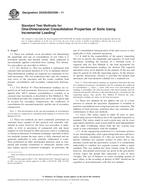
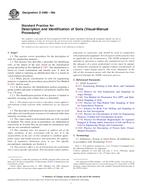 ASTM D2488-09a
ASTM D2488-09a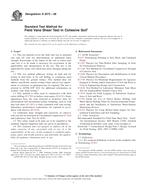 ASTM D2573-08
ASTM D2573-08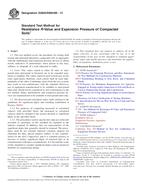 ASTM D2844/D2844M-13..
ASTM D2844/D2844M-13..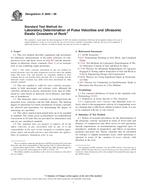 ASTM D2845-08
ASTM D2845-08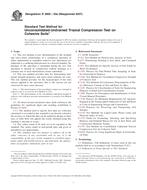 ASTM D2850-03a(2007)..
ASTM D2850-03a(2007)..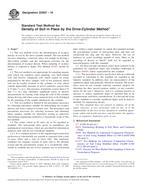 ASTM D2937-10
ASTM D2937-10
 Cookies
Cookies
